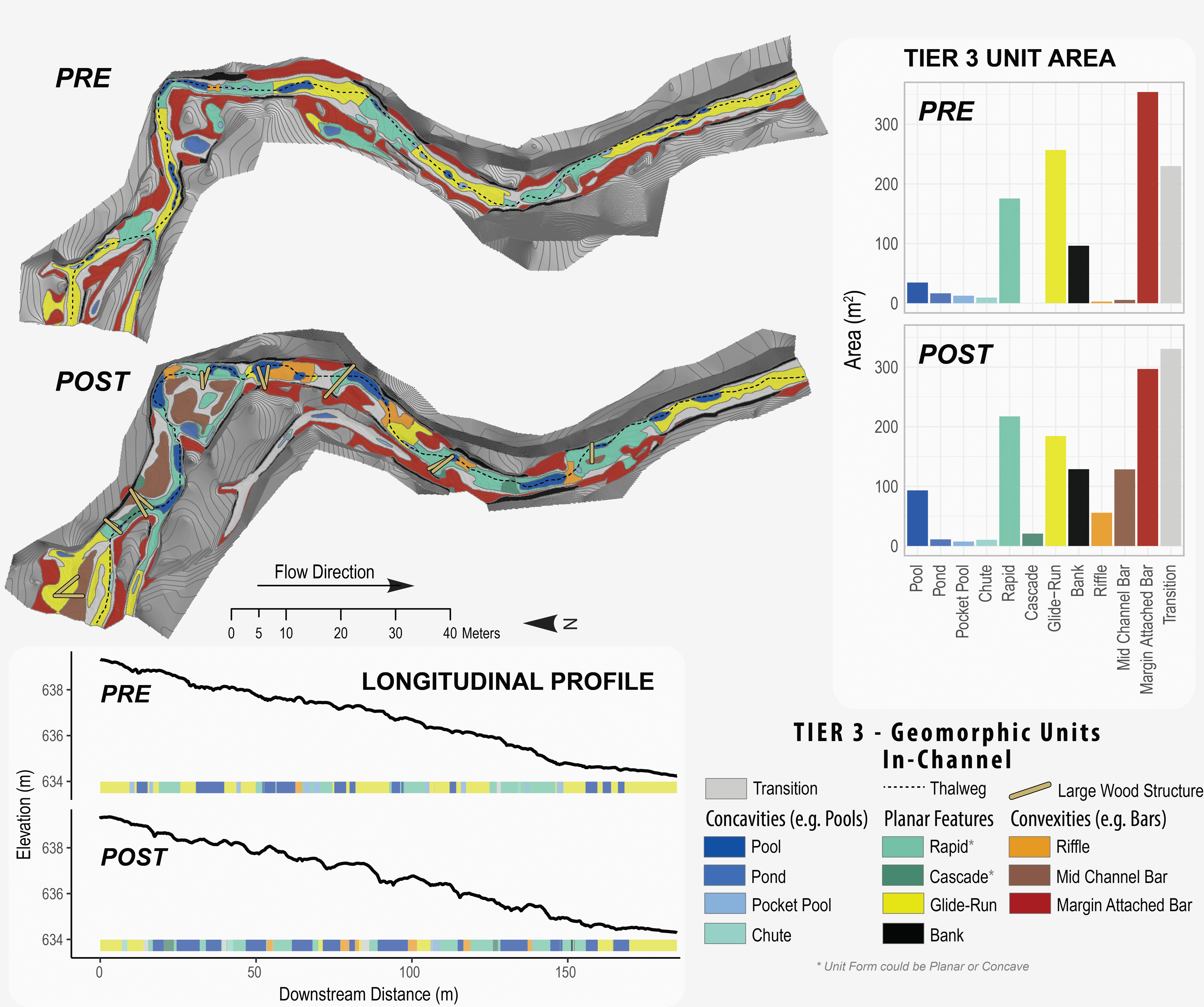What can GUT be used for?
GUT is a powerful tool for assessing the status of instream habitat condition (i.e., the assemblage of geomorphic units) as well as monitoring changes in habitat through time as an effect of management and restoration actions. When run at numerous reaches GUT can be used to upscale to the drainage network to estimate fish densities (e.g., juvenile steelhead capacity) and evaluate restoration scenarios (Kramer et al, 2017).
Effectiveness Monitoring Using GUT
The Asotin (WA) is an Intensively Monitored Watershed (IMW) that is home to ESA-listed salmonid populations including summer steelhead. Restoration strategies in the basin include instream wood additions with the goal of increasing steelhead rearing capacity by increasing habitat complexity, pool habitat, floodplain connectivity and improving riparian function. GUT was used to test the geomorphic response and effectiveness of instream wood additions by comparing pre and post restoration topographic surveys. Output from the GUT model (Figure 1) was able to highlight the effectiveness of these restoration actions including the desired effects of increasing channel complexity, bar habitat, and pool habitat.
 Figure 1. GUT Tier 3 output pre (2015) and post (2017) large wood structure additions on South Fork Asotin Creek in the Asotin IMW (WA). Changes at this reach post-restoration with large wood structures included: 1) increase in riffles, mid-channel bars and pool area, 2) increase in vertical fluctuations in the stream bed, and 3) improved access to the floodplain.
Figure 1. GUT Tier 3 output pre (2015) and post (2017) large wood structure additions on South Fork Asotin Creek in the Asotin IMW (WA). Changes at this reach post-restoration with large wood structures included: 1) increase in riffles, mid-channel bars and pool area, 2) increase in vertical fluctuations in the stream bed, and 3) improved access to the floodplain.